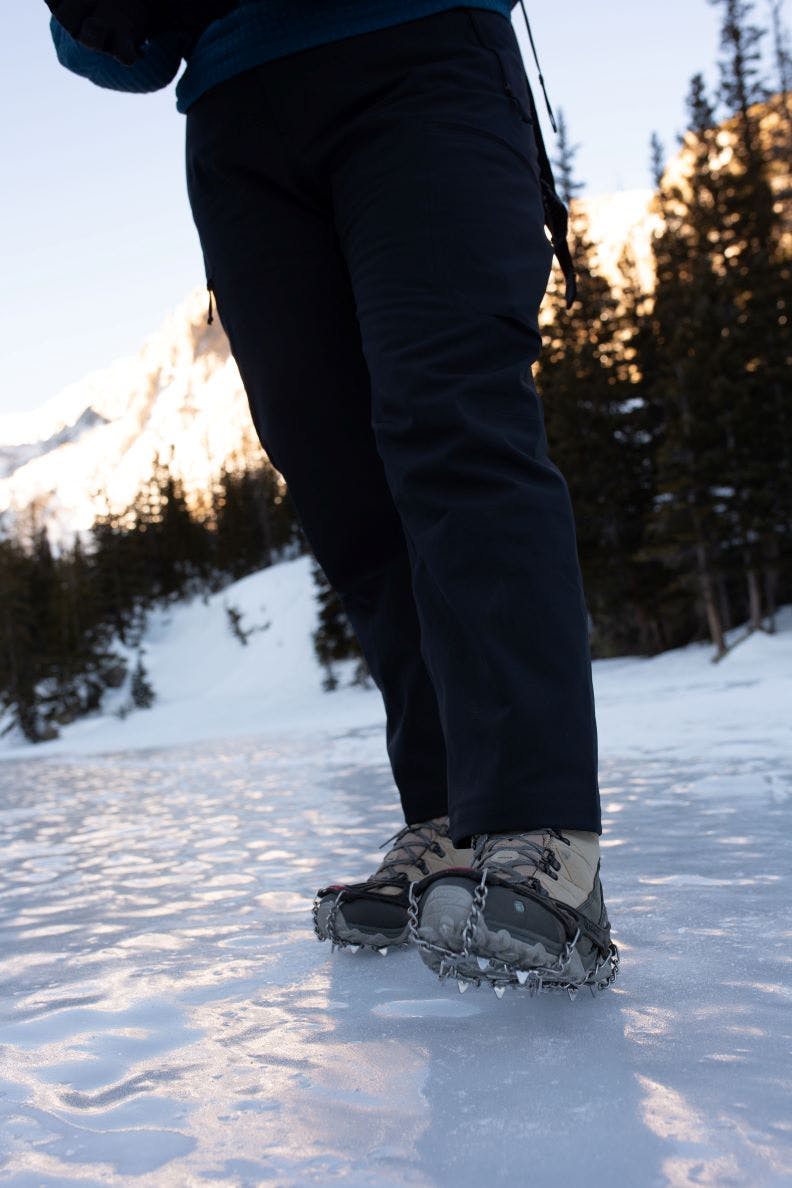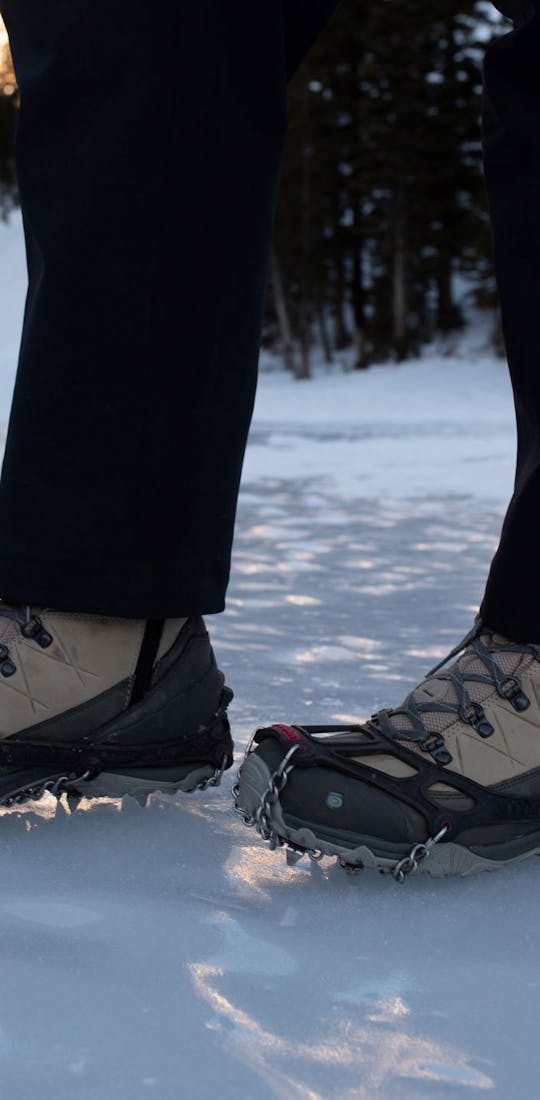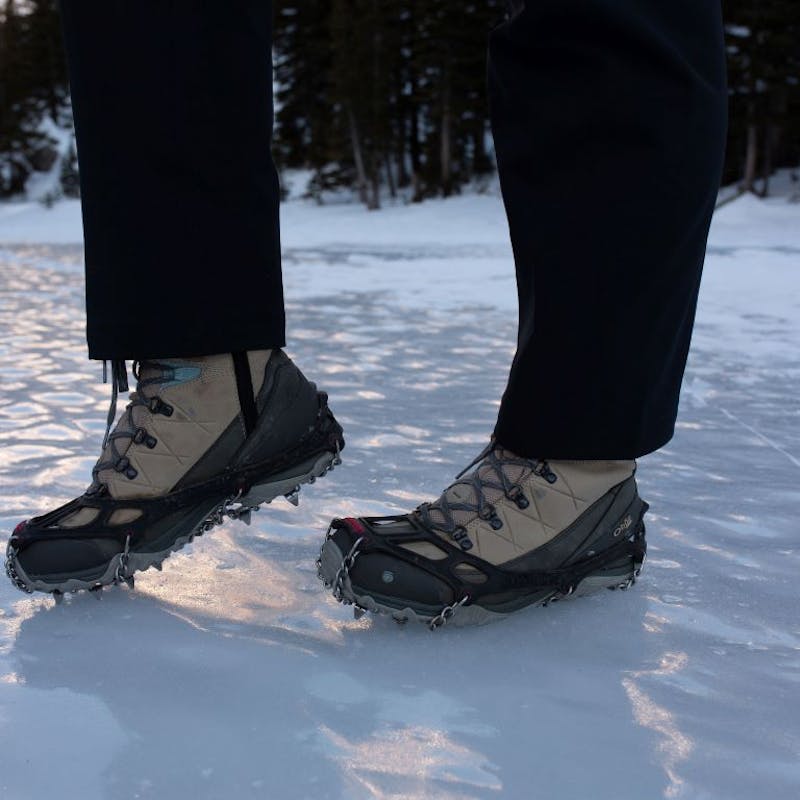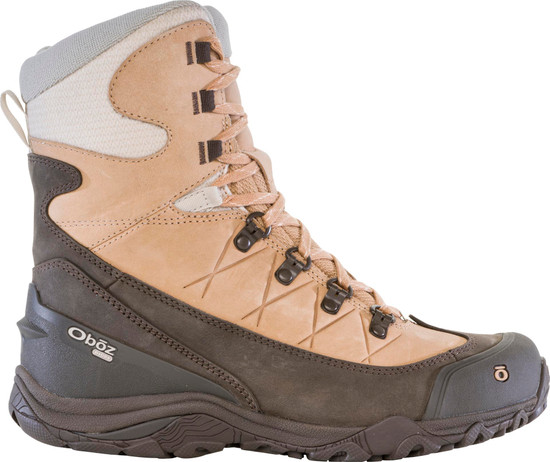Have you ever wanted to venture outside during winter but weren't sure if you had the right tools?
Winter, with its perfect sparkle of fresh snowfall and the serene quiet of a snow-covered landscape, is one of my favorite times to be outdoors. When I first moved to New York, I was thrilled to hike in the Catskills and didn't want to halt my hikes just because of the snow.
In the fall of 2020, I decided to pursue section hiking the Long Path—a 358-mile trail from Manhattan to the base of the Adirondacks. I didn't want to put my hike on hold during winter, so I delved into what I'd need to safely continue. Initially terrified about winter outdoor activities, I only had a clothing layering system and the knowledge that I needed the right boots. I began exploring traction devices and discovered options such as microspikes, snowshoes, and skis. These tools completely transformed my perspective on winter recreation. Instead of fearing falls or feeling frustrated after hours of post-holing in knee-deep snow, I could effortlessly float on top of the snow and confidently navigate steep icy trails. I have since moved to Colorado, have upped my level of winter recreation and rely heavily on each of these to ensure my safety. When going out in the winter, I like to bring snowshoes and microspikes- both of which fit perfectly with my Oboz Ousel Mid Insulated Waterproof Boots- but let’s dive in and explore which of these work best for the conditions you’ll be getting outside in!
Microspikes
Admittedly, when I first started winter hiking, I had no knowledge of microspikes- I thought that the only traction devices that existed for walking on the ice were for extreme winter mountaineering. Activities at the time, I thought were far beyond me. I spent countless days slipping and hoping that it wouldn’t be the day that I broke my wrist while falling. After expressing my concern to a friend, they told me about microspikes, and how they’re built for walking on packed snow, ice, or snow under five inches. If you’ve never seen a microspike before, they have rubber uppers that sit on the top of your boot, and a series of small metal teeth connected by chains that sit in the sole of your footwear. Microspikes are my go-to for any winter hiking- they’re compact, weigh just under 13 punches, are easy to fit in a pack, and are easy to take on and off. I’ve been on many trails in the winter where I think I’m in the clear, but then encounter icy stretches, and this is where microspikes shine! The tiny metal teeth on the base of microspikes dig in and help keep you upright.
While there are several styles of microspikes, it’s important to choose the right kind! Cleat-style microspikes like Yaktrax provide some traction and have small coils running across the sole. However, they ultimately don’t bite into ice as well as spikes do and aren’t as durable. Kahtoola microspikes are my favorite and do so well on ice! These spike-style microspikes have triangle-shaped metal teeth connected by a series of chains, allowing them to remain flexible and move with your foot. This design allows you to traverse icy surfaces with confidence!

Snowshoes
Have you ever heard of post-holing? Post-holing occurs when you take a step and sink down into the snow, creating what looks like a post-hole. If you've experienced this, you know how exhausting it can be (most of the crying I've done while hiking has been post-hole-induced). While snowshoes aren't traditionally considered traction devices, they do help you stay secure on snowy trails. They are perfect for those fresh, powdery, deeper snow days, allowing you to effortlessly float on the surface by distributing your weight over a wider area.
When looking for snowshoes, I consider a few factors. What kind of terrain will I be traveling across? Is it flat or steep? How deep is the snow? How technical is the terrain? For steep mountain days, I look for shorter snowshoes with bigger crampons (teeth), enabling me to stay mobile and navigate obstacles. On deeper snow days, I opt for longer snowshoes, dispersing weight over more surface area and preventing sinking. Snowshoes like the MSR Evo are small but allow for tail attachments to make them longer when needed. While snowshoes are more expensive than micro spikes and may feel cost-prohibitive, many outfitters like REI offer snowshoe rentals!
Approach Skis
Maybe you have been out of the trails and encountered a pair of skis attached to a pair of Oboz Footwear. Did you do a double-take?
Likely, your fellow trail-seeker is wearing approach skis. Although hard to come by, approach skis have similar bindings to that of snowshoes and can be a great tool for snowy adventures. Approach skis have a different function than alpine or nordic skis, allowing the user to wear insulated boots or footwear. The skis provide a quick, thrilling ride down-trail once you have reached your destination. Seen here is Retail Marketing Specialist, Parker, exploring trails local to the Oboz Team in Bozeman, Montana.

Now that we've broken down the different traction devices, you're ready to hit the trail no matter the conditions. As always, stay safe in winter weather and make sure you're prepared! For more from Oboz ambassadors check us out on Instagram and subscribe to our newsletter.






